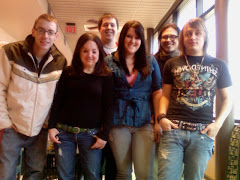
We have all been part of a small group that has some dialectical tensions. But wait? What does that mean? According to Gloria Galanes’ article “dialectical tensions of small group leadership”, these are defined as the dynamic contradictions and the “the pull of opposing forces that are desirable but mutually negate one another” (Galanes 2009). Basically, this means the normal problems we face when we are dealing with others in a small group.
Galanes study came across a couple reasons that lead to tensions in a group dynamic. First, which was extremely consistent with all participants, was the tension surrounding the decision for who leads the group. This tension is pulled taught between the leader him/herself, and the other group members. This generally happens when the leader is either making too many decisions, or giving too much control to the other members. Galanes (2009) states that “Leaders should contribute but must not stifle the group’s ideas—especially difficult when the leader has a strong power position in the group”.
The next tension that often occurs in a group setting is the idea of task/non-task activities. This is basically the fine line between having too much unproductive fun in a group, and working in a sterile, boring, and bland environment. Both ends of this spectrum can lead to tensions as well as limited productivity. Being a good leader is to be able to balance this phenomenon. Galanes (2009) saw that “Several leaders tended to stifle digression quickly, but they also believed allowing digression helps ideas germinate”.
To defeat these tensions, leaders must be able to keep a watchful eye on the responses from group members, and be able to balance their control/separation of power, and task/non-task oriented activities.
Have you ever experienced tensions in this area? Was it because you were a leader or a group member? How did you manage to find balance in the group?
source: Galanes, G. (2009). Dialectical Tensions of Small Group Leadership. Communication Studies, 60(5), 409-425. doi:10.1080/10510970903260228.
photo: http://i.zdnet.com/blogs/bad-leadership-causes-failed-it.jpg









